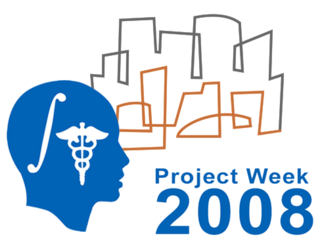Difference between revisions of "2008 Summer Project Week:fMRIconnectivity"
(New page: ===Key Investigators=== * UNC: Isabelle Corouge, Casey Goodlett, Guido Gerig * Utah: Tom Fletcher, Ross Whitaker <div style="margin: 20px;"> <div style="width: 27%; float: left; padding...) |
|||
| (3 intermediate revisions by the same user not shown) | |||
| Line 1: | Line 1: | ||
| + | {| | ||
| + | |[[Image:ProjectWeek-2008.png|thumb|320px|Return to [[2008_Summer_Project_Week|Project Week Main Page]] ]] | ||
| + | |} | ||
| + | |||
| + | |||
| + | __NOTOC__ | ||
| + | |||
| + | |||
===Key Investigators=== | ===Key Investigators=== | ||
| − | * | + | * MIT: Bryce Kim, Polina Golland |
| − | * | + | * BWH: Jungsu Oh, Marek Kubicki |
| Line 9: | Line 17: | ||
<h1>Objective</h1> | <h1>Objective</h1> | ||
| − | + | Our objective is to study functional connectivity of schizophrenia patients versus normal with unsupervised data-driven analysis methods, such as ICA and clustering. | |
| Line 18: | Line 26: | ||
<h1>Approach, Plan</h1> | <h1>Approach, Plan</h1> | ||
| − | Our approach for | + | Our approach for investigating functional connectivity of schizophrenia patients is to apply probabilistic independent component analysis (PICA) and clustering based on Gaussian mixture model (GMM). |
| + | |||
| + | Our plan for the project week is to first run such data-driven analysis methods on the data and then perform group analysis. We will also compare the results between PICA and GMM and investigate the factors that contribute to the differences. | ||
| − | |||
</div> | </div> | ||
| Line 27: | Line 36: | ||
<h1>Progress</h1> | <h1>Progress</h1> | ||
| − | + | We have applied standard fMRI preprocessing steps on the data and regressed out the effects of white matter and ventricles. We have also customized PICA and GMM tools for our analysis purpose and obtained some preliminary results. | |
| + | |||
| + | During the project week, we completed applying PICA to both individual subjects and group analysis. We plan to discuss the results with the clinicians soon. | ||
</div> | </div> | ||
| Line 34: | Line 45: | ||
</div> | </div> | ||
| + | |||
| + | ===References=== | ||
| + | * C. Beckmann and S. Smith. "Probabilistic independent component analysis for functional magnetic resonance imaging." IEEE Transactions on Medical Imaging, 23(2):137–152, 2004. | ||
Latest revision as of 14:15, 27 June 2008
Home < 2008 Summer Project Week:fMRIconnectivity Return to Project Week Main Page |
Key Investigators
- MIT: Bryce Kim, Polina Golland
- BWH: Jungsu Oh, Marek Kubicki
Objective
Our objective is to study functional connectivity of schizophrenia patients versus normal with unsupervised data-driven analysis methods, such as ICA and clustering.
Approach, Plan
Our approach for investigating functional connectivity of schizophrenia patients is to apply probabilistic independent component analysis (PICA) and clustering based on Gaussian mixture model (GMM).
Our plan for the project week is to first run such data-driven analysis methods on the data and then perform group analysis. We will also compare the results between PICA and GMM and investigate the factors that contribute to the differences.
Progress
We have applied standard fMRI preprocessing steps on the data and regressed out the effects of white matter and ventricles. We have also customized PICA and GMM tools for our analysis purpose and obtained some preliminary results.
During the project week, we completed applying PICA to both individual subjects and group analysis. We plan to discuss the results with the clinicians soon.
References
- C. Beckmann and S. Smith. "Probabilistic independent component analysis for functional magnetic resonance imaging." IEEE Transactions on Medical Imaging, 23(2):137–152, 2004.